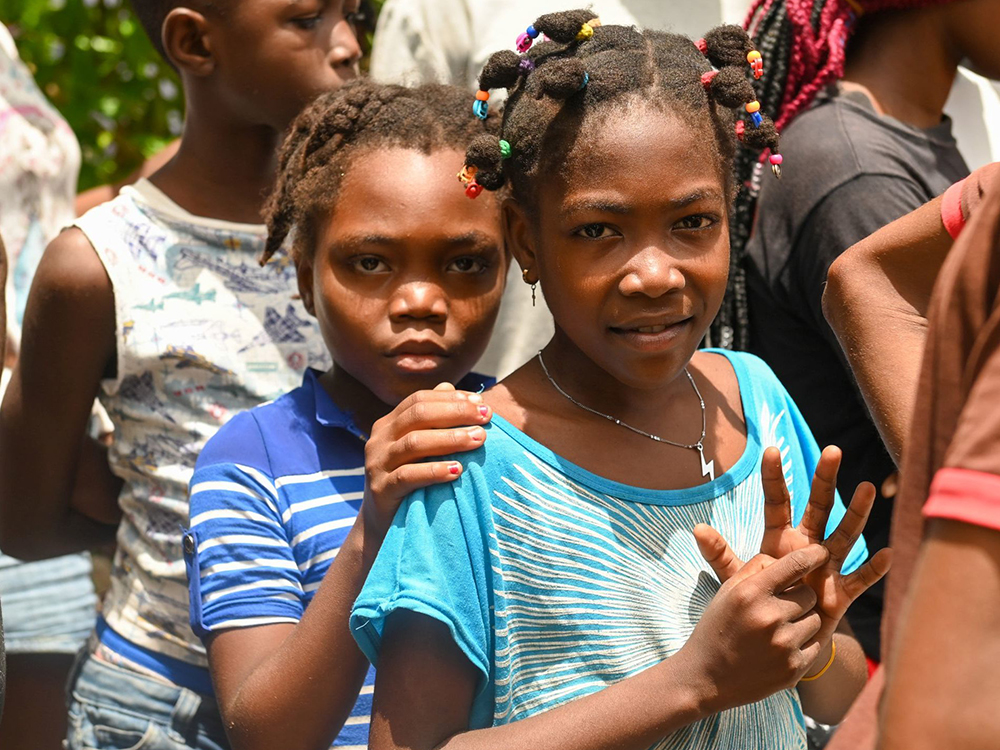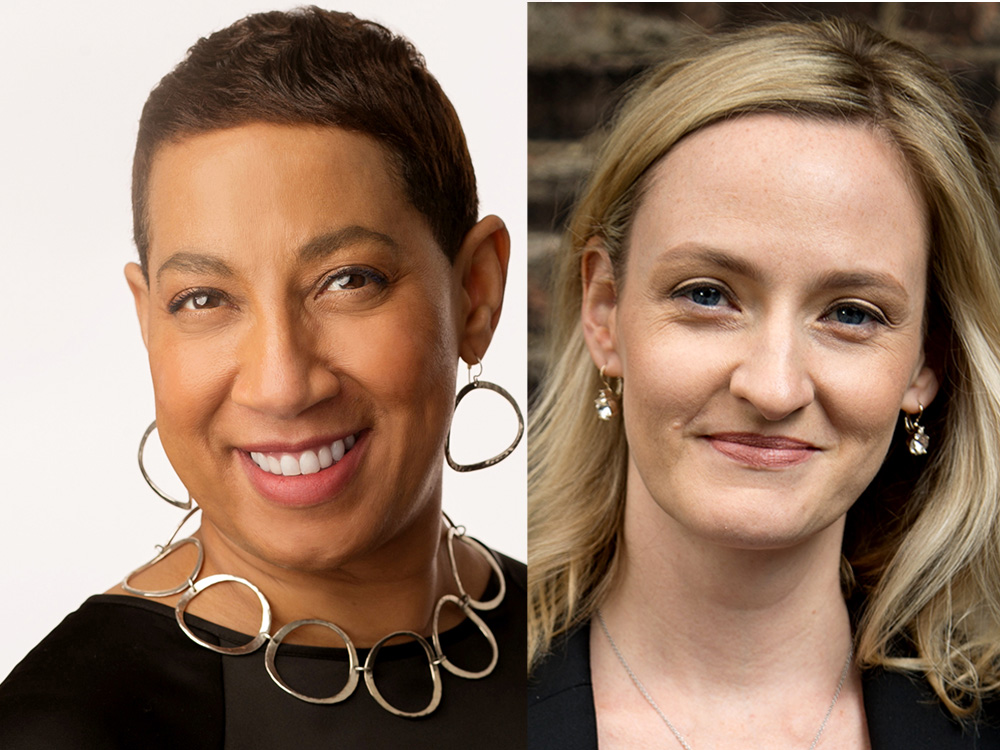
Along with government, the private sector, and civil society, philanthropy is a critical partner in the global response to humanitarian, development, environmental, and other challenges. Some U.S. grantmakers have long recognized their vital role in a globalized world. Others, such as community foundations, are now discovering their relevance and responsibilities on the international stage as the line between local and global challenges has blurred.
Internationally-directed philanthropic funding from the U.S. has steadily increased over the last several decades and shows no signs of slowing. According to GivingUSA 2017, total giving to international affairs reached $22.03 billion in 2016. Among the various factors contributing to this rise are growing awareness of donor-advised funds as a practical vehicle for charitable giving, increased efforts in corporate social responsibility, donors’ desire for leverage and diversification of their philanthropic resources, and rising global interconnectedness. Of particular note, the last couple of decades have seen donor-advised funds at community foundations and commercial sponsors increasingly challenge private foundations as drivers of international grantmaking. Total grantmaking from donor-advised funds is now roughly a third that of private foundations, and international giving from donor-advised funds is a slightly higher fraction of their total outlay (seven percent, compared to five percent from all sources combined).
Opportunities now exist for cross-border philanthropic engagement and collaboration on a scale not seen before. However, we are witnessing a so-called “closing space” for civil society in many countries around the world that is, in some cases, hampering international giving. Here we highlight some of these opportunities and barriers and discuss key domestic and foreign compliance questions faced by cross-border grantmakers.
The Sustainable Development Goals
Adopted by the member nations of the U.N. in 2015, the Sustainable Development Goals represent a timely and significant opportunity for both cross-border and domestic philanthropic engagement. Developed through a highly participatory global consultative process and charting out the key sustainable development priorities for humanity through 2030, these 17 goals, 169 targets, and 230 indicators tackle challenges ranging from poverty to the loss of biodiversity.
Achieving the Sustainable Development Goals will require leveraging global engagement from all sectors of society, including government, civil society, corporations, and the philanthropic community. Platforms for collaboration include the Sustainable Development Goals Philanthropy Platform for the philanthropic sector and the United Nations Global Compact for the corporate sector. Engagement by U.S. grantmakers with the global community working on the Sustainable Development Goals represents an opportunity to leverage funds to maximize impact overseas. It is also presents a chance to bring back lessons learned from around the world to address challenges at home.
The Closing Space for Civil Society
Over the last two decades, the institutions and non-governmental organizations that comprise civil society around the world have come under increasing attack. Many regions have experienced the so-called “closing space” within which civil society can function effectively and have a voice. This phenomenon has largely been driven by the repressive actions of governments, including laws or policies that intimidate civil society organizations or impose excessive bureaucracy on their formation and operations. Such actions are often justified by invoking the threats of money laundering, terrorism, and separatism. The tools employed, their intent, and the scope of their impact vary widely from country to country. The imposition of rules that restrict the flow of funding from abroad is of particular concern since civil society organizations globally are largely dependent on these resources. According to the 2018 Global Philanthropy Environment Index, while some positive changes have been recorded over the last three years, the environment for philanthropy remains restrictive in roughly 40 percent of countries worldwide.
Grantmakers are adapting to this environment. Many funders have reconfigured or restricted their grantmaking to comply with new national laws and avoid putting their grantees at risk and, in extreme instances, have been forced to shut down operations entirely. The sector is also being proactive to support a more enabling environment for civil society through collaborations such as the Funders’ Initiative for Civil Society. Among the strategies being pursued are coalition building, advocacy with governmental and inter-governmental bodies, and strengthening platforms that support civil society organizations. Global frameworks like the Sustainable Development Goals represent a special opportunity to engage on this front given the associated governmental buy-in and funding alignment.
Compliance Considerations
Cross-border grantmaking entails additional compliance steps and other considerations beyond those faced by grantmakers operating solely in the domestic context. Grantmakers can avoid some of this added burden by working with intermediaries that implement the vetting process and make the grant. However, many funders find compelling reasons to make direct cross-border grants themselves.
In the U.S., different international grantmaking compliance requirements apply, depending on the legal status of the grantmaker. The IRS holds private foundations to more stringent standards than those observed by grantmaking public charities. Sponsoring organizations of donor-advised funds can rely on the private foundation guidelines. All grantmakers engaged across borders must pay equal attention to U.S. counterterrorism regulations and to any foreign country requirements affecting the receipt of funding from abroad.
Some funders choose to work through internationally specialized re-granting intermediaries. This choice may be motivated by a lack of programmatic expertise or cultural knowledge, limited staff bandwidth, or risk-aversion in the face of compliance requirements. However, this comes with drawbacks since the often high percentage-based fees of re-granting intermediaries can mean less funding is available to the ultimate beneficiary. Furthermore, a grantmaker working through an intermediary will have less of a direct relationship with its grantee, which may impede measuring impact and determining lessons learned.
Driven by the preferences of cost-sensitive donors, many community foundations and other donor-advised fund sponsors are embracing direct cross-border grantmaking. Private foundations often prefer this path because they favor a close working relationship with their grantees. These grantmakers either develop the in-house capacity to manage these foreign relationships or engage specialized back-office support, particularly to outsource compliance and vetting needs.
Equivalency Determination and Expenditure Responsibility
IRS charitable giving laws mandate that U.S. private foundations complete an Equivalency Determination or exercise Expenditure Responsibility when making a cross-border grant. In many instances either approach can be used, but, this is not always the case. Among the various factors influencing this choice is the legal status of the foreign grantee, whether the grantmaker would like to make a general-support or project-specific grant, and the funder or donor’s preference concerning reporting provisions. Certain foreign entities, such as public universities, are exempt from both Equivalency Determination and Expenditure Responsibility and have abbreviated vetting requirements.
The purpose of an Equivalency Determination is to determine whether a foreign public charity would be, under IRS rules, equivalent to a U.S. 501(c)(3) public charity. The grantor may rely on the opinion of a certified tax-practitioner to review the potential grantee’s articles of incorporation and bylaws and obtain a signed affidavit confirming the grantee does not engage in a list of disqualifying activities, such as lobbying or electioneering. Though certain types of organizations are exempt, most foreign charities must provide financial information demonstrating public support, versus control by private entities. While the Equivalency Determination remains valid for up to two years, a U.S. grantmaker can fund the foreign charity with both general support and project-specific grants in the same way it would a U.S. 501(c)(3). Though technically not required with a valid Equivalency Determination, a grant agreement is recommended with any foreign grant. This provides clarity on the charitable purpose of the transaction and bolsters the grantmaker’s counterterrorism measures. Requiring reporting from the grantee is optional.
Unlike Equivalency Determination, which focuses on the organization, Expenditure Responsibility requires articulating and tracking the specific uses of the grant funds. The grantor begins with a pre-grant inquiry to determine if the grantee is capable of executing on the charitable activities to be funded. Signed grant agreements are used to articulate the specific charitable purpose of the grant, prohibit certain uses of the funds, and hold the grantee accountable to IRS-mandated reporting requirements. The grantor obtains reports from the grantee on an annual basis until the funds are fully expended and reports annually on the grant to the IRS. While Expenditure Responsibility cannot be used to make a general support grant, it allows a grantmaker to support charitable and non-charitable organizations alike, both internationally and domestically, with project-specific funding.
Counterterrorism Financing Screening
While counterterrorism vetting of a foreign grantee is voluntary, having policies and procedures in place may help protect a grantmaker in the event of an actual diversion of funds. In addition to adverse publicity and damage to a foundation or company’s reputation, the consequences of a discovered diversion could include asset freezing, civil penalties, the loss of 501(c)(3) status, or even criminal prosecution. The U.S. Treasury Department has published its voluntary best practices, which U.S.-based grantmakers and charities are encouraged to follow based on their level of perceived risk. While most grantmakers implement the Specially Designated Nationals (SDN) search, many overlook the key step of reviewing a grantee’s programs and projects to see if it may have operations in a country sanctioned by the Office of Foreign Assets Control (OFAC).
Foreign Country Requirements
As many countries continue to impose new restrictions on civil society organizations, regular monitoring of foreign requirements as part of grantmaking due diligence is a must. In this rapidly changing landscape, regulations can vary dramatically by country. In some countries, such as India, grantees must obtain prior permission and register to receive foreign funding. In others, the grantmaker is required to share sensitive information (e.g., Mexico) or obtain special in-country registration (e.g., China). The consequences of noncompliance also range widely and can include the sequestering of grant funds, financial penalties to the grantee, forcing a grantee to shut down its operations, or, in extreme cases, the imprisonment of grantee staff. For country-by-country requirements, the International Center for Not-for-Profit Law publishes its Civic Freedom Monitor.
Concluding Thoughts
The premise of the Sustainable Development Goals is that solving both local and global challenges is only possible with all hands on deck and an implicit recognition of the full extent of our global interconnectedness. This calls for cross-sectoral, cross-border collaboration on a new level and summons to the table portions of the philanthropic community previously not engaged internationally.
International philanthropy is critical, not only to supporting the implementation of collectively identified solutions and to meeting global targets, but also to helping sustain civil society in the long run and countering the growing threats of “closing space.” For foundations new to cross-border grantmaking and deterred by the prospect of burdensome compliance requirements, many options exist. Grantmakers can ease into international grantmaking at a pace that is comfortable, either by working with intermediaries or by outsourcing their compliance and vetting needs before building in-house capacity.
About Paragon Philanthropy
Paragon Philanthropy is a philanthropic services company that helps US-based community foundations, family foundations, and public charities to break down the barriers to cross-border grantmaking.


